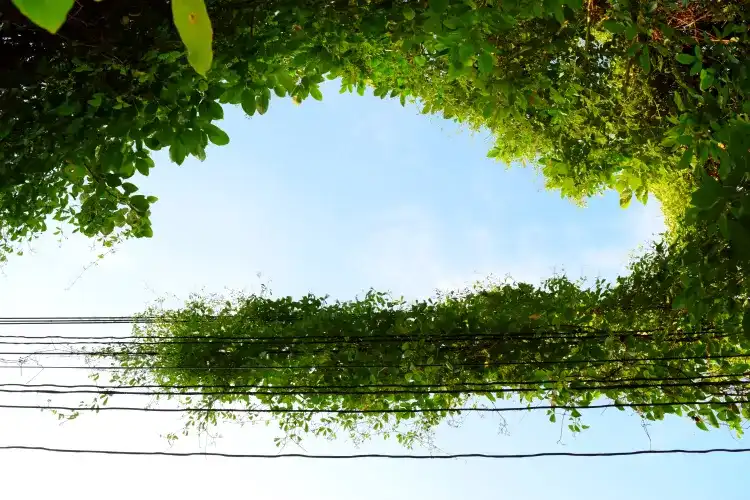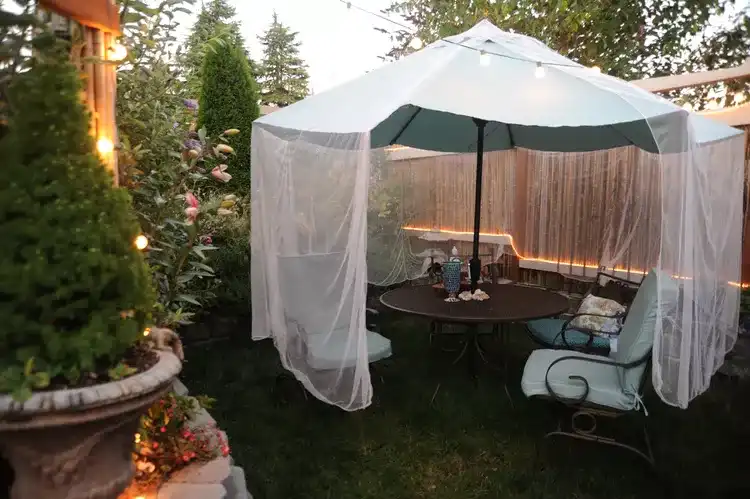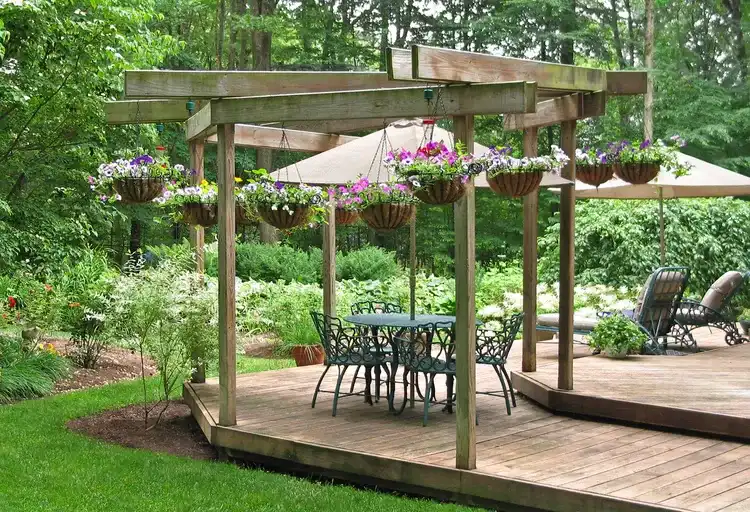Whether you’re hosting a barbecue, enjoying your morning coffee, or watching the sunset, being outdoors brings calm, clarity, and comfort until the sun becomes too much to handle. As temperatures rise, creating shaded zones in your garden, patio, or balcony isn’t just about staying cool. It’s also about making your space livable, inviting, and energy-efficient. Smart shade solutions can cut down cooling costs, protect skin from harmful UV rays, and transform any backyard into a personal sanctuary.
Fortunately, you don’t need a total backyard makeover to enjoy cool comfort. From fast-growing greenery to smart fabric solutions, here are nine creative ways to beat the heat and build stylish shelter under the sun.
1. Plant Fast-Growing Shade Trees

Trees are nature’s original shade-makers. They purify the air, buffer wind, support biodiversity, and most importantly in this case offer deep, cooling shade that matures and improves with time. Their broad canopies not only make outdoor spaces more usable but can also reduce the internal temperature of nearby buildings, leading to real savings on summer cooling bills.
For quicker results, opt for fast-growing varieties. The hybrid poplar is famous for its rapid growth, shooting up to 8 feet per year under the right conditions. Red maples are another excellent choice, known for their stunning autumn foliage and ability to grow more than 2 feet annually. American sycamores, with their towering potential of up to 175 feet, can eventually shade entire houses.
Tree planting may take planning and patience, but the payoff both aesthetic and functional is massive. Just make sure to research spacing, root spread, and maintenance needs before planting near buildings or underground utilities.
2. Let Vines Climb a Pergola or Trellis

When you can’t wait decades for a tree to grow, vines offer a flexible, fast-growing alternative. With the help of structures like arbors, pergolas, or trellises, you can turn simple vertical supports into stunning green tunnels or overhead canopies. The effect is both beautiful and functional shielding you from harsh sun while adding movement, texture, and even fragrance.
Grapevines and Native Climbers
One of the most rewarding climbers is the grapevine. With just basic care and annual pruning, a single vine can yield several pounds of fruit and cover a structure with leafy shade. Muscadine and fox grapes are excellent native varieties for North American gardens. If grapes aren’t your thing, consider native honeysuckle or passionflower both offer brilliant blooms and attract pollinators.
Climbers can be trained to grow across wires, fences, or even walls, providing quick vertical coverage that complements your existing landscape design.
3. Try Edible Shade with Cucurbits

Few plant families offer such a satisfying mix of beauty and bounty as the cucurbits cucumbers, gourds, melons, and squashes. With their large, lobed leaves and vigorous climbing ability, they can be trained up arched trellises or pergolas to create a seasonal roof of greenery. This not only cools the area beneath but rewards you with a delicious harvest.
Just be mindful: not all cucurbits are great climbers. Melons and watermelons tend to be too heavy and may need additional support, such as mesh slings. But many cucumbers, bottle gourds, and small squashes thrive in vertical gardens and offer plenty of shade coverage.
They’re especially handy for renters or temporary setups they grow fast, provide results in a single season, and die back cleanly in winter.
4. Create Vertical Green Walls with Beans and Peas

Legumes are underrated shade allies. Lightweight and quick to climb, beans and peas are perfect for creating living green screens, especially along garden fences, pergola posts, or chicken wire setups. They don’t demand elaborate support structures and grow vigorously throughout the summer months.
Because they’re annuals, you get the benefit of fresh crops without the long-term commitment of permanent vines. Plus, they fix nitrogen in the soil, helping to improve the health of other nearby plants.
5. Go Floral with Flowering Climbers

While edible plants are practical, nothing elevates an outdoor retreat like colorful blossoms spilling from above. Flowering vines add visual appeal, fragrance, and shade and many are ideal for trellises, pergolas, and arches.
- Climbing roses – Elegant and aromatic, available in endless varieties for different climates.
- Clematis – Known for large, star-shaped blooms, it thrives in partial shade and cooler climates.
- Honeysuckle – Sweet-smelling and fast-growing; a magnet for bees and hummingbirds.
- Wisteria – Majestic cascading flowers; American wisteria is a great non-invasive option.
- Morning glories – Ideal for sunny spots and poor soils, they bloom early and often.
Most flowering climbers establish quickly and require minimal maintenance a great tradeoff for dramatic results.
6. Install a Wire Frame Shade Grid

If space is tight or you want a cleaner look, try using tensioned wire systems to support your climbing plants. These minimalist setups are perfect for creating vertical shade on balconies, patios, or in narrow gardens. Lightweight and flexible, wire structures allow you to reconfigure your shade layout seasonally or as your plants grow.
Choose coated or stainless steel cables for durability, and space them close enough to let vines climb efficiently. Structures like these are particularly useful in modern garden designs, and can even reduce surrounding temperatures by several degrees if used properly.
7. Embrace Modern Shade Sails

Shade sails are the go-to solution for instant comfort with minimal installation. These tensioned fabric panels can be anchored to poles, walls, or pergola beams, offering UV protection and open-air ventilation in one elegant package. They come in various colors and shapes, and can be layered or angled to block the sun throughout the day.
For best results, choose high-density polyethylene (HDPE) sails with UV stabilization and ensure proper tension to prevent sagging or flapping in the wind. Perfect for decks, poolsides, or playgrounds, shade sails deliver flexible coverage that feels as light as it looks.
8. Add Umbrellas, Curtains, and Bamboo Blinds

Sometimes, all you need is a quick fix. Patio umbrellas, retractable awnings, and hanging curtains can all provide shade with a touch of style and no digging or drilling required. Bamboo blinds, especially, are great for filtering low-angle sunlight in the morning or late afternoon without cutting off airflow entirely.
You can also create cozy nooks by combining several elements an umbrella with outdoor curtains, for example, or adding netting to keep bugs away while softening the light.
9. Combine Techniques for Maximum Comfort

The best shade solutions often come from layering methods. A pergola can support vines, string lights, hanging plants, and even a shade sail on top. Use trees to filter light across your yard while umbrellas provide targeted relief on your seating area.
Mixing living and non-living elements allows you to adapt to your space’s limitations and aesthetic whether you want a jungle vibe, minimalist elegance, or a family-friendly retreat. And if you’re pressed for time, annual climbers or removable fabric can provide temporary shade until long-term plantings mature.
Whatever your approach, adding shade doesn’t just enhance comfort it invites you to spend more time outdoors, connect with nature, and enjoy your space in all seasons.





